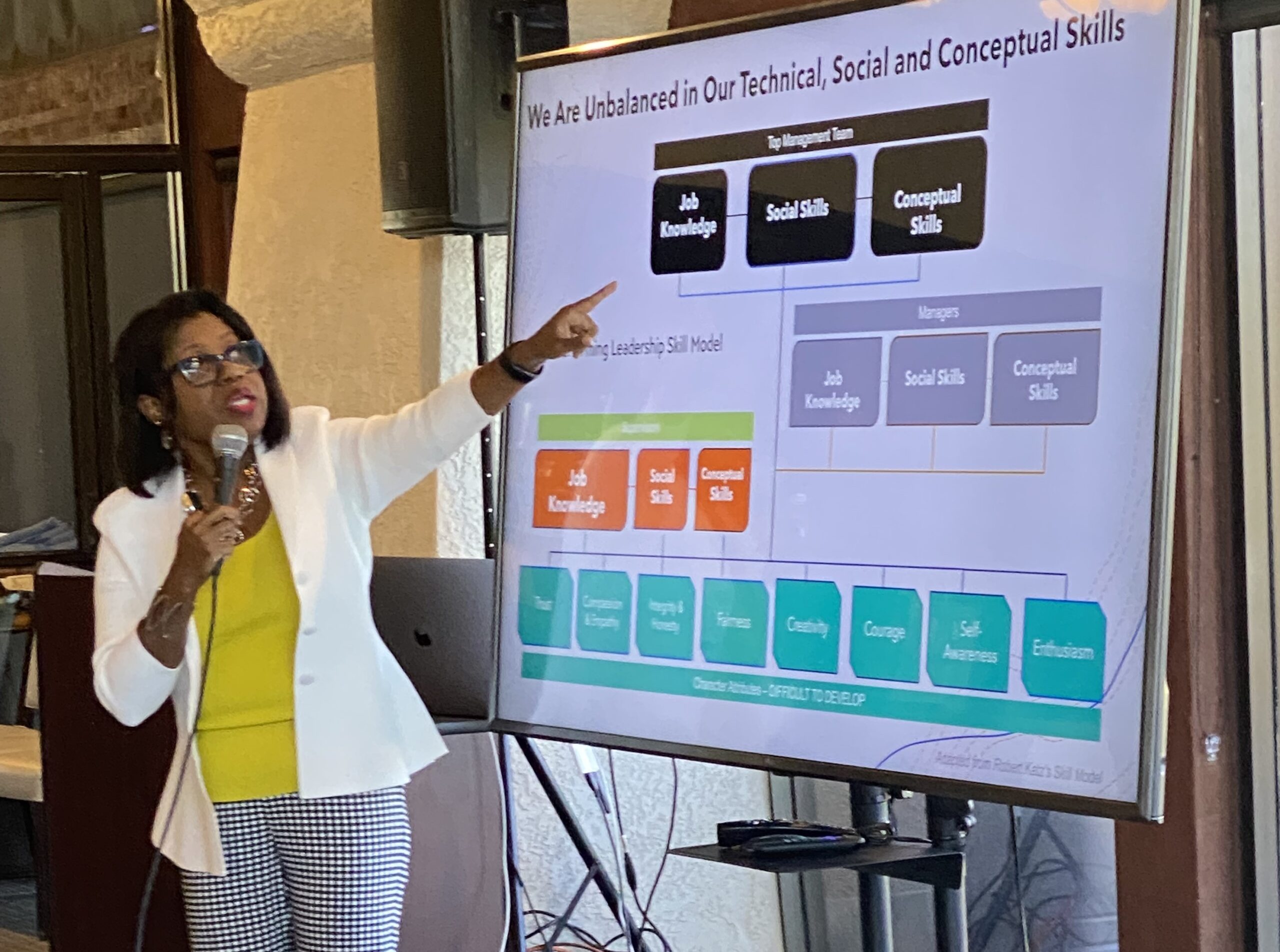There is so much good content when we attend conferences and training events. Some of it is a refresher, some we forget, but some content sparks new ideas and a desire for change. Yet, we don’t make the changes in our behavior that we know we need. Why is that?
“Perfect is the enemy of good.”
We want to be perfect. If you’re looking for perfection, you may never even attempt to practice new behaviors, and this is what trips us up on the last step. Who wants to look or sound silly when practicing new skills? The fear of appearing inept, unqualified, or unintelligent keeps us stuck in status quo behaviors and results in the fulfillment of the Peter Principle.
Here are the steps for change:
Step 1: I learn what to do. (I know)
Step 2: I know it is good for me, and I want to do it. (I want)
Step 3: I will make the effort. (I will)
Your effort in that last step determines whether you achieve your goal.
To meet the demands of businesses today, you must be in a perpetual state of learning, but learning doesn’t have to be difficult. Make learning easy so you can make practicing new behaviors even easier. Here’s how:
Conduct a Skills Gap analysis. You can complete ours or take someone else’s to identify the skills you lack.
Determine if there is a relative need for the skills you lack. Where can you apply these skills? Where can you realize the greatest benefit?
Select a skill to focus on.
Break the skill down into steps.
Learn the skill by practicing each step.
Rather than learning every aspect of Kotter’s 8-Step Change Management Model, why not learn and practice each of the eight steps one at a time? Here’s how it might look:
Future Goal: My team’s customer service will improve by 3 points by year-end.
Actions to Create a Sense of Urgency
Step 1 (I know): I will secure Kotter’s book on Leading Change, or I’ll watch a video on Kotter’s 8-Step Change Model by [date].
Step 2 (I want): I will understand and can apply Step 1-Create a Sense of Urgency by [date].
Step 3 (I will): I will create and communicate a sense of urgency for my team to get them to embrace improving customer service by [date].
Actions to Put a Team Together
Step 1 (I know): I will read the chapter or watch a video on Step 2 of Kotter’s Change Model by [date].
Step 2 (I want): I will ask volunteers to lead the team on this goal by [date].
Step 3: (I will): I will help the team create a charter to guide their engagement.
As you can see, there is a prescriptive approach to breaking down your learning into manageable pieces rather than trying to figure everything out on your own. By breaking down a big task of learning and practicing new behaviors, you’ll see ways to make adjustments to deepen your learning experience.
For those who say, “I don’t have time,” go for it the old-fashioned way. Read the entire book and make something of it. For those who need a more manageable plan, try the step-by-step method. What’s most important is your ability to find time to practice new skills.



